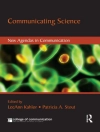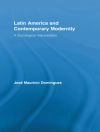One of the leading textbooks in its field,
Bringing Fossils to Life applies paleobiological principles to the fossil record while detailing the evolutionary history of major plant and animal phyla. It incorporates current research from biology, ecology, and population genetics, bridging the gap between purely theoretical paleobiological textbooks and those that describe only invertebrate paleobiology and that emphasize cataloguing live organisms instead of dead objects. For this third edition Donald R. Prothero has revised the art and research throughout, expanding the coverage of invertebrates and adding a discussion of new methodologies and a chapter on the origin and early evolution of life.
Содержание
Preface To the Student: Why Study Fossils? PART I: THE FOSSIL RECORD: A WINDOW ON THE PAST
1. The Fossil Record
What is a Fossil? How Does an Organism Become a Fossil? What Factors Affect the Fossilization Potential of an Organism? What Factors are Required for Extraordinary Preservation? How Good is the Fossil Record? Conclusions2. Variation in Fossils
Theme: Variation; How do Organisms vary during their Lifespans? How do Populations of Organisms Vary? Conclusions3. Species and Speciation4. Systematics
Why Systematics? Evolution and Classification; Competing Systematic Philosophies; Molecular Systematics; Codes of Systematic Nomenclature; Conclusions5. Evolution
The Evolution of Evolution; The ‘Evolutionary Synthesis’; Challenges to the Neo-Darwinian Synthesis; Evolution and the Fossil Record; Conclusions6. Extinction7. Functional Morphology
Form and Function; Theoretical Morphology; Functional Hypotheses as Testable Science; Case Studies in Functional Morphology; Conclusions8. Paleoecology
Ecology and Paleoecology; Ecological Relationships; Environmental Limiting Factors; Direct Paleoecological Evidence; Some Ecological Ideas that have been Applied (and Misapplied) to the Fossil Record; Evolutionary Paleoecology; Conclusions9. Biogeography
Organisms in Space and Time; Ecological Biogeography; Historical Biogeography; Conclusions10. Biostratigraphy
Faunal Succession; Biostratigraphic Zonations; Factors controlling Fossil Distributions; Biostratigraphic Sampling; The Time Significance of Biostratigraphic Events; North American Land Mammal ‘Ages’ and Biochronology; Resolution, Precision, and Accuracy; Index Fossils and the Global Biostratigraphic Standard; Conclusions PART II: LIFE OF THE PAST AND PRESENT
11. Life’s Origins and Early Evolution
Concocting the ‘Primordial Soup’; Mud and Mosh Pits, Kitty Litter and Fool’s Gold; Life is a Commune; The Earliest Fossils; Cambrian ‘Explosion’—or ‘Short Fuse’?; Why did Life Change So Slowly Before the Cambrian?; Rocks, Hox, and Molecular Clocks.12. Micropaleontology: Fossil Protistans
Introduction; The Kingdoms of Life; Systematics; Foraminifera; Radiolaria; Diatoms; Coccolithophores13. Colonial Life: Sponges, Archaeocyathans, and Cnidarians14. The Lophophorates: Brachiopods and Bryozoans15. Jointed Limbs: The Arthropods16. Kingdom of the Seashell: The Molluscs
Introduction; Systematics; Mollusc Origins and Diversification; Gastropods; Bivalves; Cephalopods17. Spiny Skins: The Echinoderms18. Dry Bones: Vertebrates and their Relatives
Introduction; The Road to Amphioxus; Getting a Head: The Craniates; Jaws: The Gnathostomes; Fish Bones The Osteichthyans; Lobe Fins: The Sarcopterygians; Four on the Floor: The Tetrapods; Land Eggs: The Amniotes; Feathered Dinosaurs: The Birds; Furry Folk: Synapsids and Mammals19. Fossilized Behavior: Trace Fossils20. Traces of Earth’s Green Mantle: Paleobotany
Introduction; Plant Taphonomy; The First Photosynthetic Organisms; The Plant Kingdom; Vascular Plants; Tracheophytes; Naked Seeds: The Gymnosperms; Flower Power: The Angiosperm Revolution; Floras through Time Glossary Bibliography Index
Об авторе
Donald R. Prothero is a Research Associate in Vertebrate Paleontology at the Natural History Museum of Los Angeles County. He has taught college geology and paleontology for 40 years at institutions such as Columbia University, Vassar College, Knox College, and Pierce College, and currently at Cal Poly Pomona. For 27 years, he was Professor of Geology at Occidental College in Los Angeles and Lecturer in Geobiology at the California Institute of Technology in Pasadena. He earned his M.A., M.Phil., and Ph.D. degrees in geological sciences from Columbia University. He is the author of over 300 scientific papers published in leading journals and over 30 titles in geology, paleontology and evolutionary biology.












